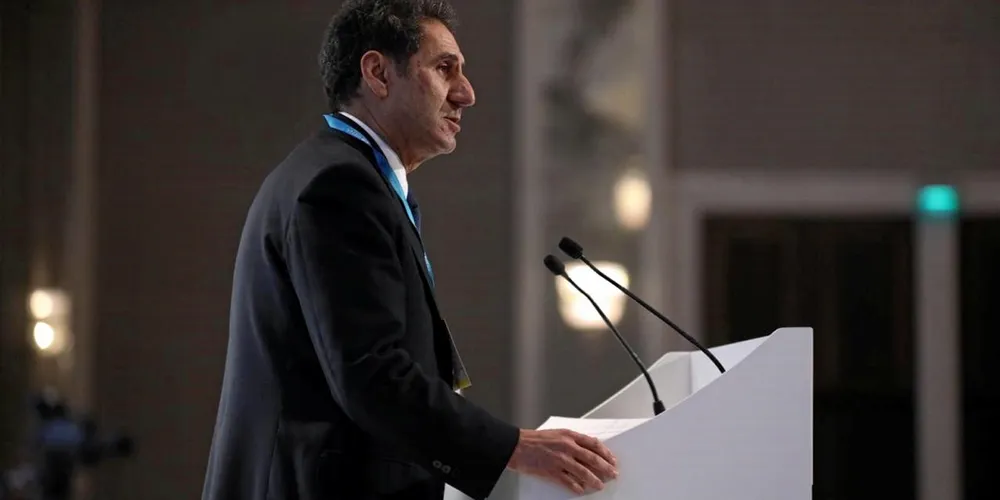Speed energy transition to boost global economy 2.5% on way to 'climate safety': Irena
Agency’s latest World Energy Transition Outlook flags shift to wind and solar-led energy systems would 'instigate profound changes across economies and societies' but cost $4.4trn a year

An accelerated renewables-fuelled energy transition that aligns “sharp” changes in international investment strategies, capital markets and government policy would get the world on track to meet Paris Agreement climate targets while boosting the global economy almost 2.5% higher than is currently forecasts, according to a new report from the International Renewable Energy Agency (Irena).
Green is the new black. Subscribe to Accelerate
Get the market insight you need into the global oil & gas industry's energy transition – from the new newsletter from Upstream and Recharge. Sign up here
The agency’s latest World Energy Transition Outlook flags that wind and solar-led clean energy systems are set to “instigate profound changes that will reverberate across economies and societies” in the coming decades but will need the support of “adjustments in capital flows and a reorientation of investments” that would translate into an annual spend of some $4.4trn.
“Energy transformation will drive economic transformation,” said Irena director-general Francesco La Camera. “This outlook represents a concrete, practical toolbox to total reorientation of the global energy system and writes a new and positive energy narrative as the sector undergoes a dynamic transition.
“There is consensus that an energy transition grounded in renewables and efficient technologies is the only way to give us a fighting chance of limiting global warming by 2050 to 1.5°C [as per the Paris targets].
“As the only realistic option for a climate-safe world, Irena’s vision has become mainstream,” added La Camera of the report, which calculates the yearly capital investment required is “feasible and equal to around 5% cent of the global GDP in 2019”.
The report highlights that the $33trn in fresh investment called for to boost renewable energy build-out, end-use electrification, power grids, hydrogen and R&D to Paris-aligned legels would be “greatly exceeded” by the benefits that came with this capital spend.
“When air pollution, human health and climate change externalities are factored in, the payback is even higher, with every $1 spent on the energy transition adding benefits valued at between $2-$5.50, in cumulative terms, [equal to] between $61-$164trn by the mid-century.”
Irena Agency’s 1.5°C ‘pathway’ also pointed up the expected creation of up to 122 million energy-related jobs in 2050, more than double today’s 58 million, with renewable energy alone accounting for more than a third of all employment in the industry, “supporting the post-Covid recovery and long-term economic growth”.
“Energy transition is a daunting task but can bring unprecedented new possibilities to revitalise economies and lift people out of poverty,” said La Camera, who highlighted the report’s “unique value” in outlining the policy frameworks and financing structures needed for a “just and inclusive” transition.
“Each country will define what is the best for them, but collectively, we must ensure that all countries and regions can realise the benefits of the global energy transition for a resilient and more equitable world. We have the know-how, we have the tools, we need to act, and do so now,” he said.
La Camera underlined that the next decade would be “decisive” in meeting the Paris goals as well as the UN’s sustainable development ambitions, saying: “Any delay will drive us to the direction of further warming, with profound and irreversible economic and humanitarian consequences.”
The next decade 'decisive' for planet
According to the Irena report, phasing out coal, curtailing capital spending in oil & gas exploration and production “to facilitate a swift decline and a managed transition”, and integrating technology, policy and market solutions would put the global energy system “on track” to keep global temperatures to within 1.5°C of pre-industrial levels.
The Irena report sees energy transition as a “big business opportunity for multiple stakeholders including the private sector, shifting funding from equity to private debt capital”, noting that the latter is project to grow from 44% in 2019 to 57% in 2050, an increase of almost 20% over currently planned policies.
“Energy transition technologies will find it easier to obtain affordable long-term debt financing in the coming years, while fossil fuel assets will increasingly be avoided by private financiers and therefore forced to rely on equity financing from retained earnings and new equity issues,” said the report authors.
“But public financing will remain crucial for a swift, just and inclusive energy transition and to catalyse private finance.
“In 2019, the public sector provided some $450bn through public equity and lending by development finance institutions. In our 1.5°C scenario, these investments will almost double to some $780bn. Public debt financing will be an important facilitator for other lenders, especially in developing markets.”
This capital shift, the report underscored, would have to be directed by policy makers that would “incentivise but also take action to eliminate market distortions that favour fossil fuels and facilitate the necessary changes in funding structures”, meaning a phase out of subsidies for oil, gas and coal, “and changing fiscal systems to reflect the negative environmental, health and social costs of fossil fuels”.
“Monetary and fiscal policies, including carbon pricing policies, will enhance competitiveness and level the playing field.”
(Copyright)